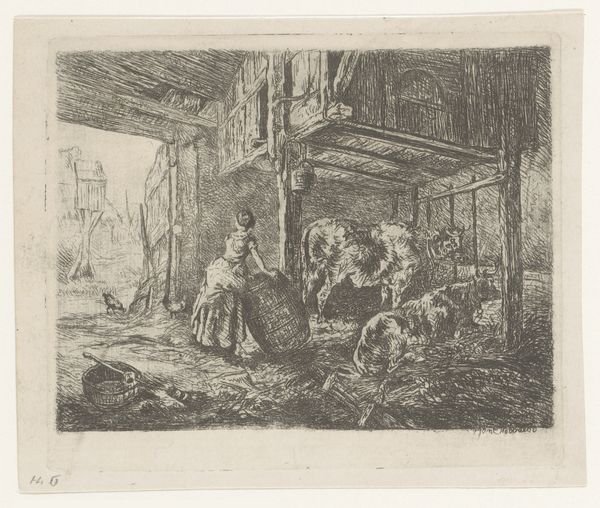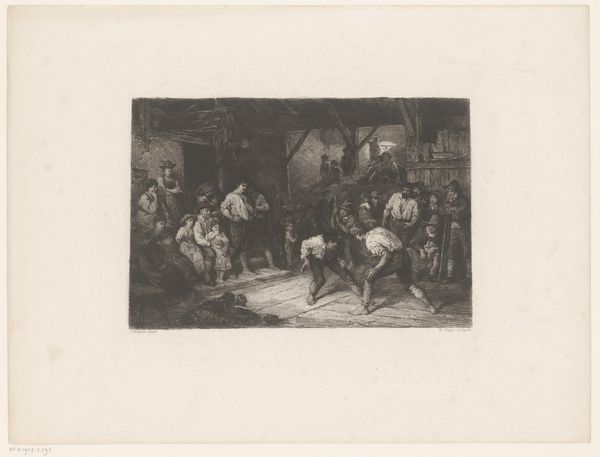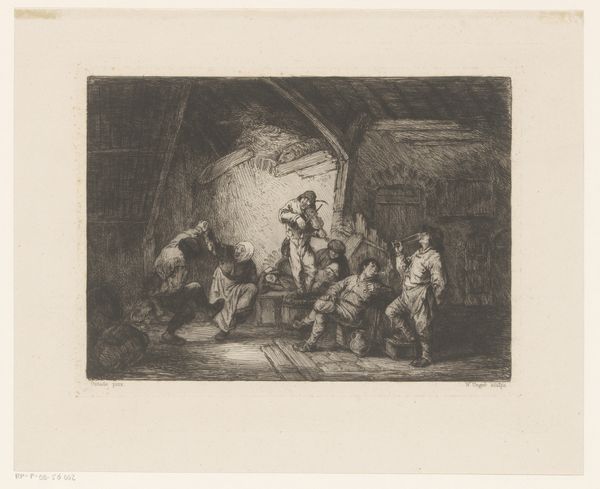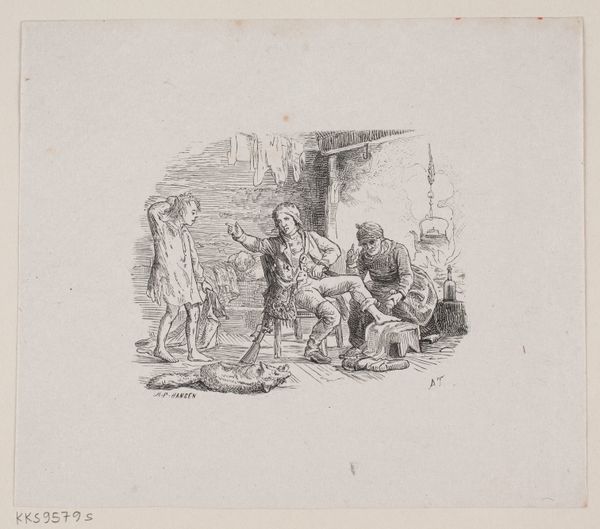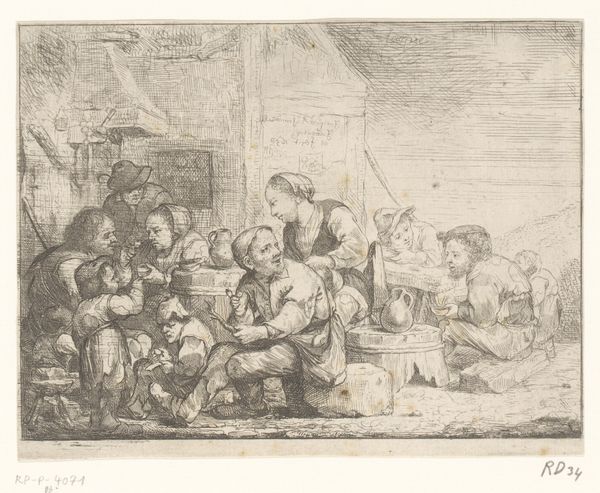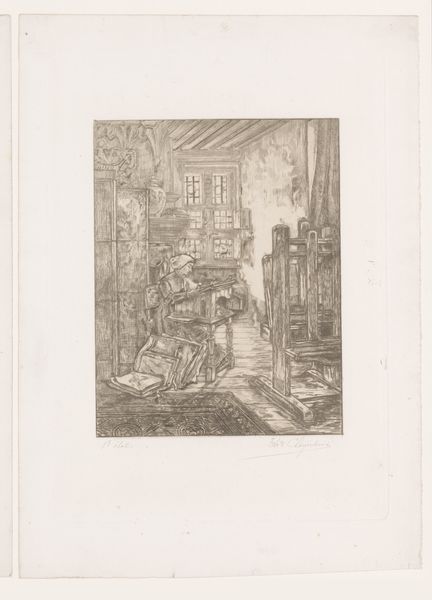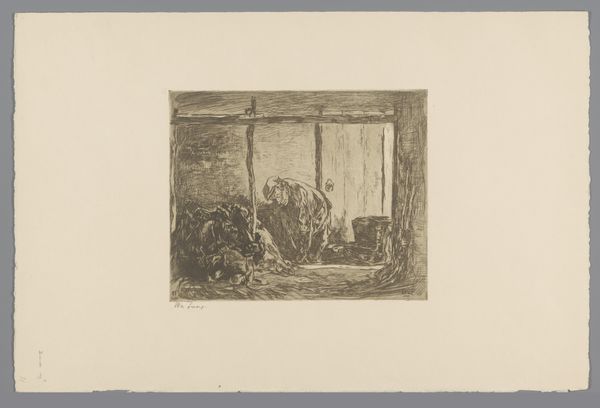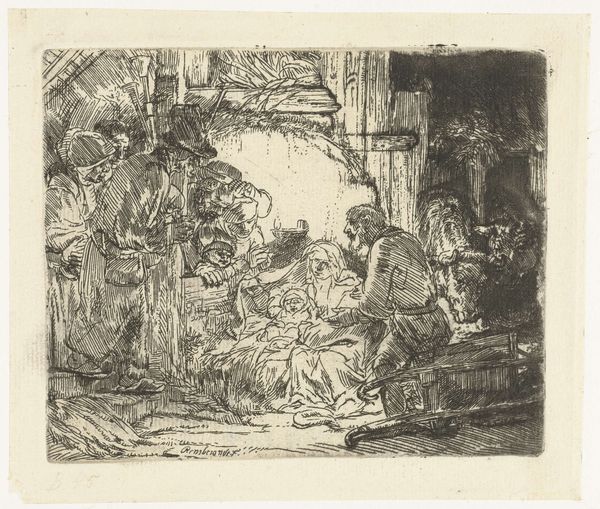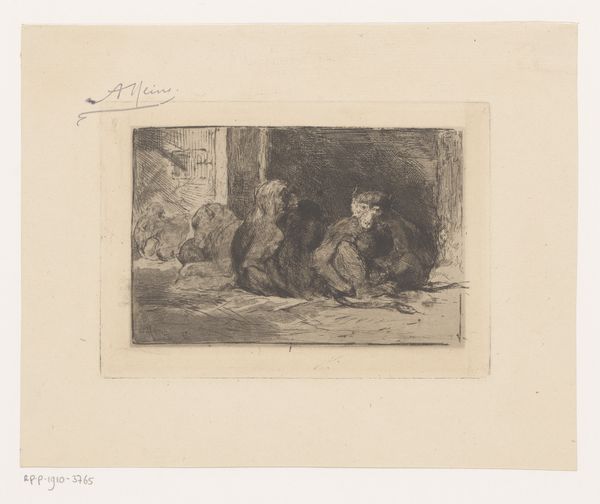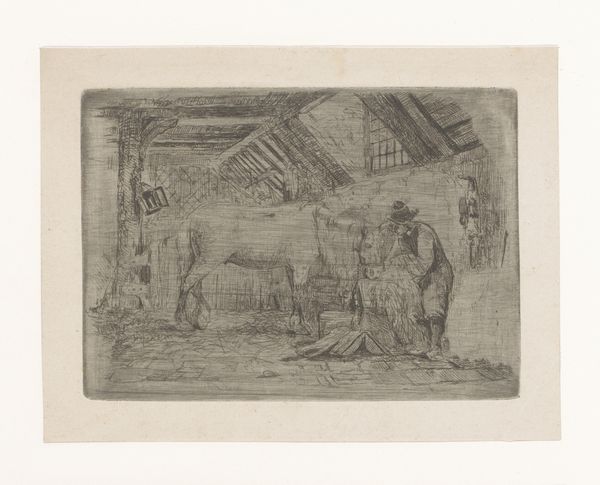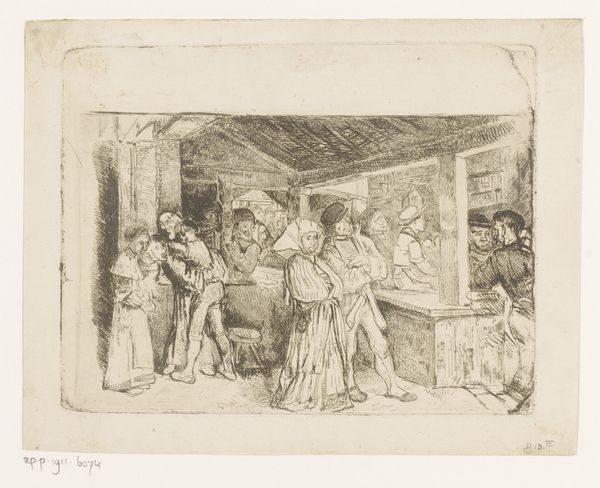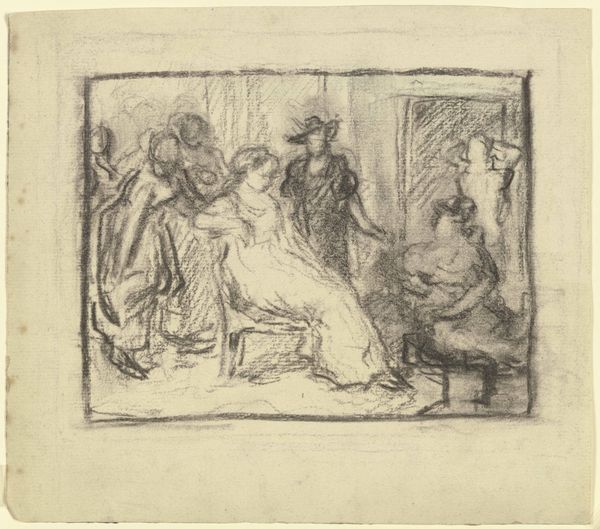
drawing, print, etching, ink
#
drawing
# print
#
etching
#
landscape
#
ink
#
genre-painting
#
realism
Dimensions: height 109 mm, width 132 mm
Copyright: Rijks Museum: Open Domain
Curator: Jan Stobbaerts created this etching, “Woman with Barrel in a Stable with Two Cows,” sometime between 1848 and 1879. Editor: It’s striking how dark it is. The dense, cross-hatched lines create a very enclosed, almost claustrophobic atmosphere in that barn. You can almost smell the hay and manure. Curator: Right, the etching technique allows for those fine details and gradations of light and shadow. This captures the realities of rural labor and farm life. Think about the role of women, tethered to the domestic sphere. She's placed with farm animals, whose social position is one of the working class. How do you see gender reflected in such conditions? Editor: Well, let’s not forget the physicality involved. That barrel, rendered with such emphasis on its texture, represents sheer manual labor. This suggests not only women's roles but the heavy work in pre-industrial agricultural settings, particularly the cooperage needed to build and maintain a water tight container. What materials were available, what kind of timber was locally harvested, and how it might've shaped the social relations here. Curator: The Realist style pushes us to look at the ordinary and everyday, challenging the glorification of the past seen in much art of the time. The woman, the barrel, the cows - the tools, even the construction. These are the things of common life and material survival. It evokes the socio-economic position, as if her social standing as it literally propping up the work. Editor: Absolutely. Stobbaerts also calls attention to a different form of labor by showcasing how all those individual lines form the printed etching, so how do the repetitive, even tedious actions coalesce and what kind of new relations can materialize between medium and meaning? It really does challenge the hierarchical split between art and craft by placing emphasis on the making of art, no? Curator: I find it speaks powerfully to a moment in time where industrialization was radically changing lives. It's not romanticized; it's a portrait of labor and subsistence. Editor: Ultimately, seeing how such rough conditions still require care shows that value, in the sense of meaningfulness, can be found in working hands. Curator: Yes, a reflection of how dignity might be made evident in common labor. Editor: Indeed, Stobbaerts helps us recognize the worth in simple tools and how hard-worn textures build up our environment.
Comments
No comments
Be the first to comment and join the conversation on the ultimate creative platform.
